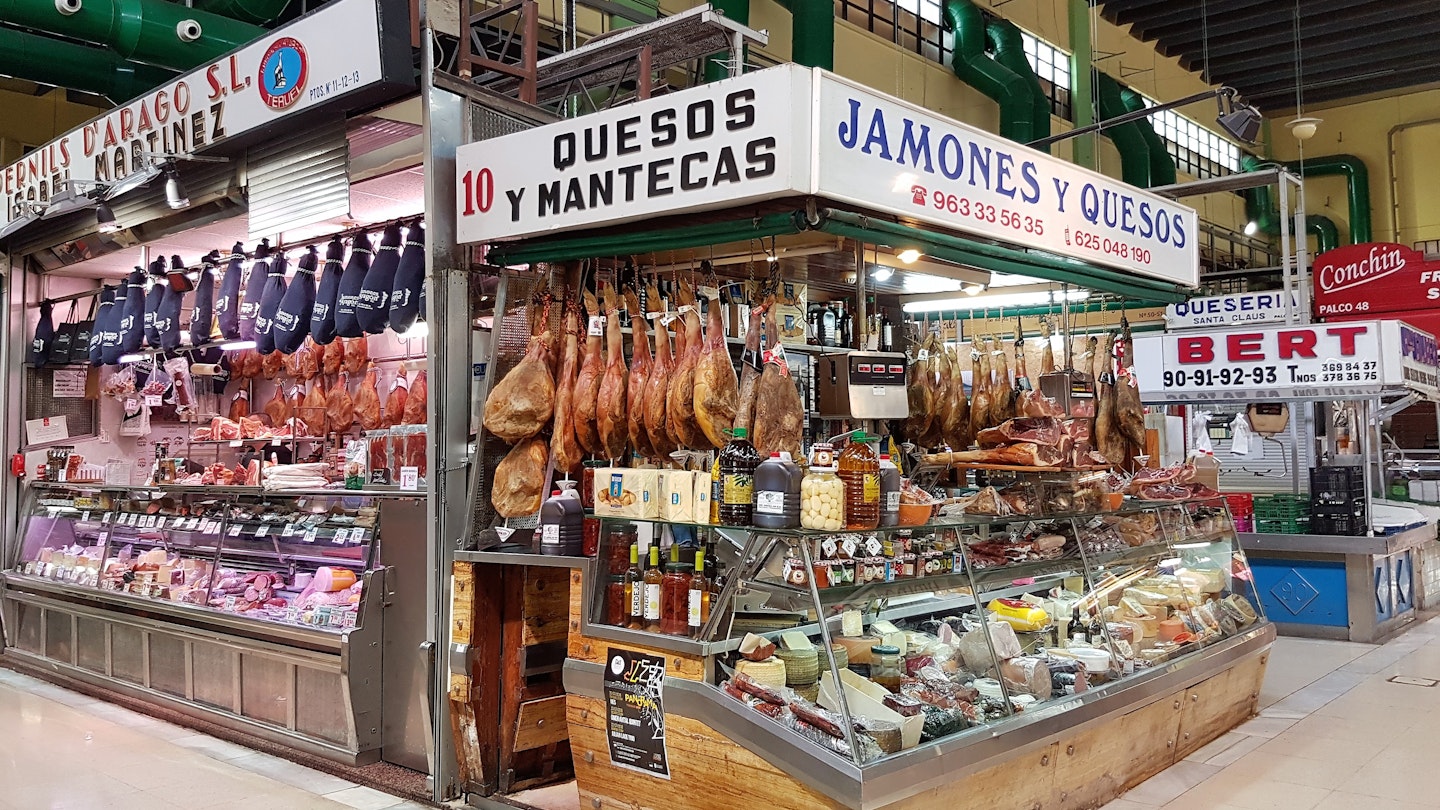Share
Oct 16, 2019 • 5 min read

Swapping one sun-drenched city for another, writer Robert Kidd moved from Brisbane to Valencia in 2017. After visiting the city on a whim the previous year, the freelance journalist decided this was the place to experience the celebrated Spanish lifestyle. When not searching for the perfect paella or working on rolling his Rs, he tells anyone who’ll listen why Valencia is Spain’s best city.
A typical weekend involves… the beach. Valencia’s vast stretch of sand is one of Europe’s best city beaches. In winter, couples come for a fresh morning walk along the promenade, and in summer, the sand and sea are the places to be. I enjoy strolling the length of the promenade from the marina down to Patacona, typically less crowded. Lunch usually consists of fried seafood at Llevant or a rice dish at Casa Navarro. Then it’s back to the beach, and during the summer months, a caipirinha at one of the chilled chiringuitos (beach bars) on the sand.
When I have friends in town… I take them to La Lonja de la Seda. The Gothic former silk exchange provides a grand introduction to the city’s history and an insight into the power Valencia enjoyed in the 15th and 16th centuries. A few doors down, in the shadow of the grand Mercado Central, the Boatella tapas bar is a fine spot to sample Valencia’s famed fresh produce. There isn’t much better than sitting in the sun with fried artichokes and a cold beer.
The city comes alive during… Las Fallas. This fiery festival in March features about 800 elaborate, colourful sculptures displayed on the streets before being burnt in a citywide bonfire. Visit the Museo Fallero to see those pardoned in previous years. Moreover, daily mascletà (earth-shaking displays of pyrotechnic power) and nightly fireworks keep exploding until the early hours. Yes, it’s crowded, chaotic, and almost impossible to get much sleep, but it’s also a lot of fun.

A local delicacy you can’t miss is… paella. Don’t let tourist traps fool you – traditional paella often contains rabbit, chicken, snails, rosemary, and garrofón beans. It isn’t wet; it’s traditionally eaten for lunch, and those crunchy grains at the bottom of the pan (the socarrat, or ‘Valencian caviar’) are the best bit. When I crave this dish, I visit Casa Carmela. This traditional venue serves wood-fired paella so packed with flavour that you’ll understand all the fuss. Better yet, try to snag an invite to a Sunday lunch paella – every Valencian’s mother apparently cooks the world’s best.
If I need some exercise… I run in the Turia Gardens. This 9km-long park is a former riverbed that runs like a green vein from one end of the city to the other. Running on the designated track allows me to pass picnicking families and duck under flower-filled bridges; it feels more like fun than work. Valencia’s lack of hills indeed makes it easier.
When I’m up for a big night out… I start with bar-hopping in the lively Russafa barrio (district). Its laid-back vibe, friendly staff, and affordable cocktails make Cuatro Monos a great beginning spot. There are even more watering holes in the adjacent, upmarket Canovas neighbourhood, including Doce Gin Club, famous for its hundreds of gin varieties. If I’m still awake (most clubs don’t get going until 3 am), L’Umbracle Terraza is atmospheric. The open-air space is filled with palm trees inviting you to dance beneath the stars until morning.

When I want to cook up a storm… I head to Russafa Market. While it may not possess the stunning architecture of Mercado Central, it is less crowded, cheaper, and the produce is equally delicious. The store owners are always offering helpful advice if you’re searching for something specific in season. Alternatively, Cabanyal Market, located in a traditional fishing neighbourhood, has some of the freshest seafood around.
When I want to see live sport… I’m in luck, as Valencia boasts two teams in La Liga, Spanish football’s top division. Valencia CF plays in the imposing, nearly 100-year-old Mestalla Stadium, while Levante UD’s humble home is Estadio Ciudad de Valencia. Tickets are generally available for most matches, excluding those against Barcelona and Real Madrid.
When little ones are visiting… Parque Gulliver is always a winner. In the Turia Gardens, this free playground allows kids to climb over and slide down a giant Gulliver. A short walk away, the futuristic City of Arts and Sciences precinct impresses visitors of all ages with its ultramodern structures. There’s a hands-on science museum, aquarium, and activities like zorbing on the dazzling blue water for younger ones.

When I want to get out of the city… I take a bus or bike to La Albufera. This national park serves as a peaceful escape with its wild beaches, rice fields, and a large lagoon. El Palmar is a charming town with traditional houses and many restaurants. Before heading back to the city, a boat ride on the lagoon is perfect for bird watching.
One thing I hate about Valencia is… August. It’s incredibly hot, prompting most locals to escape to the mountains or coast. While the old town is packed with tourists enjoying summer holidays, the rest of the city feels eerily empty.
I know I’m a Valencian because… I’ll challenge anyone who claims that an authentic paella contains seafood or chorizo or is eaten at night. I’m also unfazed by daytime fireworks.





